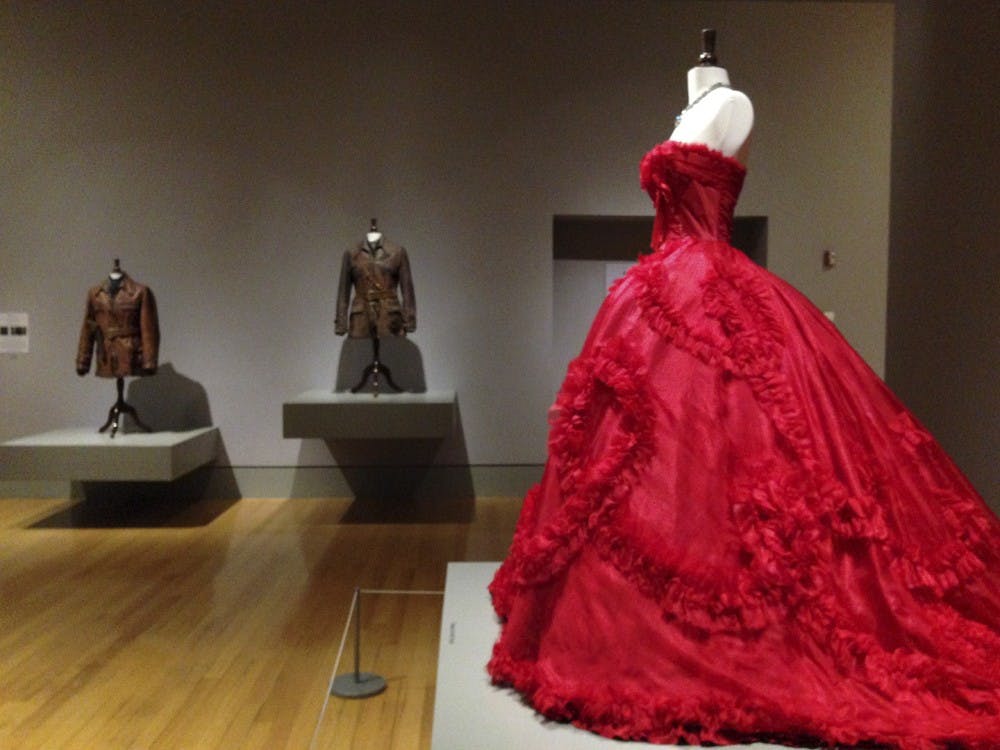The "CUT! Costume and the Cinema” exhibit is currently on view at the Columbia Museum of Art on Main Street. The exhibit features 43 period costumes from 26 films. Notable movies featured in the display include “The Phantom of the Opera,” “Pirates of the Caribbean: The Curse of the Black Pearl,” “Sense and Sensibility” and “Sherlock Holmes.”
Cosprop Ltd., a world-renowned British costume company, created all of the costumes in the exhibit. They have worked for many notable television, film and theatre production agencies. Film stars Johnny Depp, Kate Winslet, Kiera Knightley, Uma Thurman and many others have worn garments in the collection.
Catherine Walworth, the curator of the exhibit, said that Cosprop is dedicated to maintaining high standards and producing genuine garments.
“They’re going to go to extremes of authenticity for something that will only be worn probably once,” Walworth said.
Each item is meticulously designed and hand crafted. Costumiers at Cosprop dye fabrics, sew detailed beading and hand-embroider the garments.
In cinematic arts, a character’s wardrobe is often shown close-up with extreme detail. Zippers were not invented until the 19th century. Consequently, an actress playing the role of an 18th century duchess would not be shown wearing anything with a zipper.
The exhibit provides an opportunity for museum patrons to delve into different worlds, as the gallery is rich with historical context. A character’s costume also reveals information about industry, trade and socioeconomic class. For example, if large hoop skirts are popular, it is usually a signal of good economic times. Additionally, the fabric that a dress or suit is constructed of suggests level of class or status in society.
A costume exhibit poses a specific set of challenges compared to traditional art.
“So few museums have costume collections because it is its own scientific conundrum,” Walworth said.
She described the difficulties associated with fitting items onto a limited number of platforms. Walworth measured the diameter of many dresses in order to determine how the costumes could be feasibly arranged.
Similar to displays of historic documents; lighting levels must be kept dim in order to preserve delicate fabrics. Additionally, appropriate security must be provided in order to prevent museum guests from attempting to touch the garments.
Although the exhibit travels to different cities, its appearance at the Columbia Museum of Art is original.
“It doesn’t look like this anywhere else,” Walworth said.
Graphic designers at the museum changed the design of the costume labels, and the exhibition designer constructed the poles that supported each one. Walworth selected the layout and placement of the costumes. Because it is a three-dimensional medium, the exhibit was arranged so that museum patrons are able to walk around most of the costumes and observe them from different angles.
“We were really excited to be able to talk about costume design as another creative art,” Walworth said.
The exhibit offers an opportunity for students to experience career options in fashion and design. The exhibit is on view at the museum through Feb. 19, and student tickets are $5.

